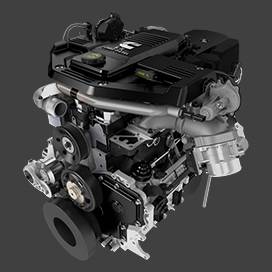Oct . 09, 2024 11:31 Back to list
brake drum and rotor lathe
The Importance of Brake Drum and Rotor Lathe Services
In the world of automotive maintenance and repair, ensuring that a vehicle's braking system functions optimally is paramount for safety. Among the critical components of the braking system are the brake drums and rotors, which need to be properly maintained to guarantee effective stopping power. One of the essential services in maintaining these components is the process of machining via a brake drum and rotor lathe.
What is a Brake Drum and Rotor Lathe?
A brake drum and rotor lathe is a specialized machine designed to restore the flat surface of brake drums and rotors. This machine removes material from these components to eliminate imperfections, such as warping or uneven wear, which can arise from continued use. Eventually, such imperfections can lead to brake vibration, reduced braking efficiency, and even safety hazards while driving.
The Process of Machining
The process begins with the inspection of the brake drums or rotors to determine the extent of wear and whether machining is necessary. If the components are thick enough and structurally sound, they are placed on the lathe. The lathe employs cutting tools to precisely machine the surfaces, ensuring that they are smooth and even. The rotor or drum is rotated at a uniform speed while the cutting tool incrementally removes material. The objective is to achieve a flat and smooth surface that will enhance the contact between the brake pads and the braking components, leading to improved performance.
Benefits of Machining Brake Drums and Rotors
1. Cost-Effectiveness Machining existing brake drums and rotors is often significantly less expensive than replacing them entirely. By using a lathe, car owners can extend the life of their braking components, thereby saving money on premature replacements.
brake drum and rotor lathe

2. Enhanced Performance Properly machined brake drums and rotors improve the overall braking performance of the vehicle. Smooth surfaces enable better contact with brake pads, allowing for more efficient stopping power.
3. Safety Safety is the foremost concern when it comes to any vehicle operation. By maintaining the brake system through machining, car owners significantly reduce the risk of brake failure or performance degradation, ensuring safer driving conditions.
4. Environmental Impact By opting to machine rather than replace, automotive shops can contribute to waste reduction. Fewer discarded parts mean less environmental impact associated with manufacturing new components.
When to Use a Brake Drum and Rotor Lathe
Regular inspection of brake components should be an integral part of vehicle maintenance. Signs that indicate the need for machining include noticeable vibrations while braking, increased stopping distances, and audible noises when applying the brakes. If any of these symptoms arise, it’s advisable to consult a qualified technician who can assess whether machining is the appropriate solution or if new components are required.
Conclusion
In conclusion, the brake drum and rotor lathe serves as a vital piece of machinery in the maintenance of vehicle braking systems. The process of machining drums and rotors is not only cost-effective but also enhances the safety and performance of a vehicle. As automotive safety standards continue to increase, the role of machining in prolonging the life of braking components becomes all the more significant. Therefore, regular maintenance and inspection of these parts, along with timely machining, can ensure that drivers enjoy the peace of mind that comes with knowing their vehicle is equipped for safe driving. Vehicle owners should prioritize the health of their braking systems, and utilizing a brake drum and rotor lathe is a step in the right direction.
-
Premium Brake Drum Iveco – Durable Drum Brake Drum & Brake Shoe Solutions
NewsJul.08,2025
-
High-Performance Brake Drum Liza for Enhanced Safety Reliable Drum Brake Drum & Brake Shoe Solutions
NewsJul.08,2025
-
High-Quality Brake Drum MAZ – Durable Drum Brake Drum & Brake Drum and Brake Shoe for Optimal Performance
NewsJul.07,2025
-
High-Quality Brake Drum Kamaz for Reliable Performance Durable Drum Brake Drum & Brake Shoes
NewsJul.07,2025
-
High-Quality Brake Drum Kamaz for Reliable Performance Durable Drum Brake Drum & Brake Shoe Replacement
NewsJul.07,2025
-
Brake Drum Man - High-Quality Drum Brake Drum & Brake Drum and Brake Shoe Solutions
NewsJul.06,2025
